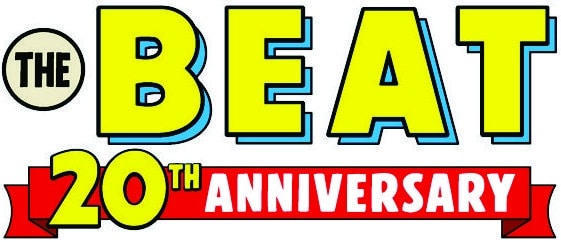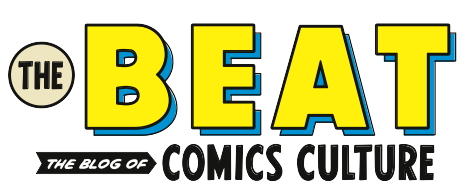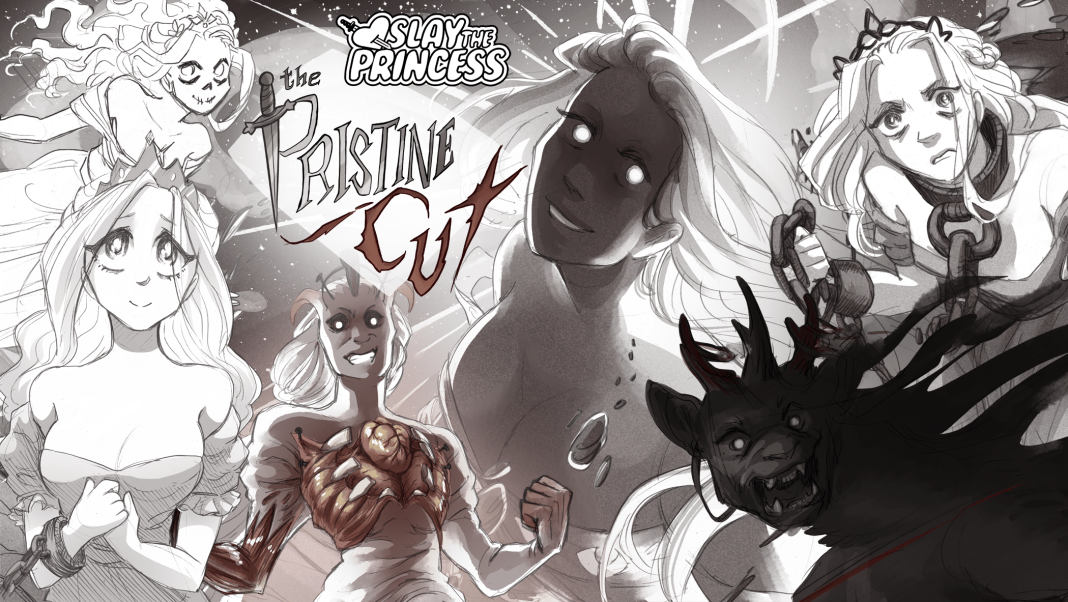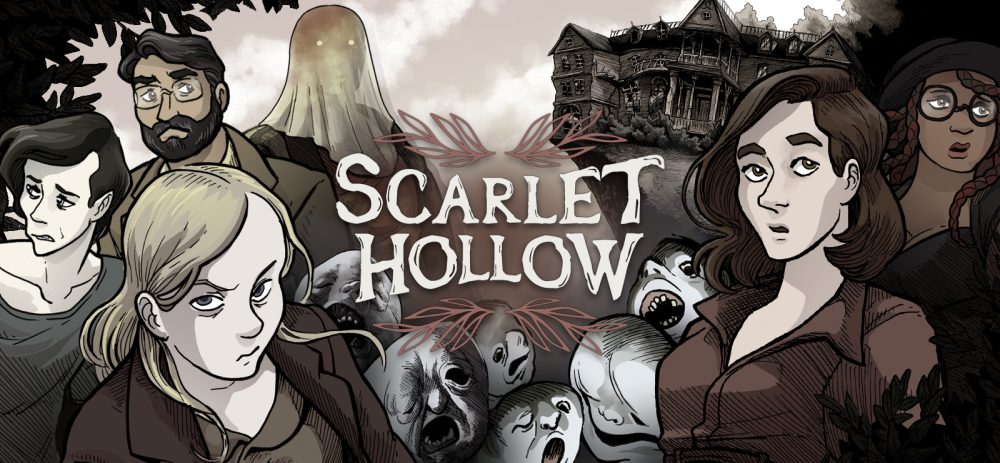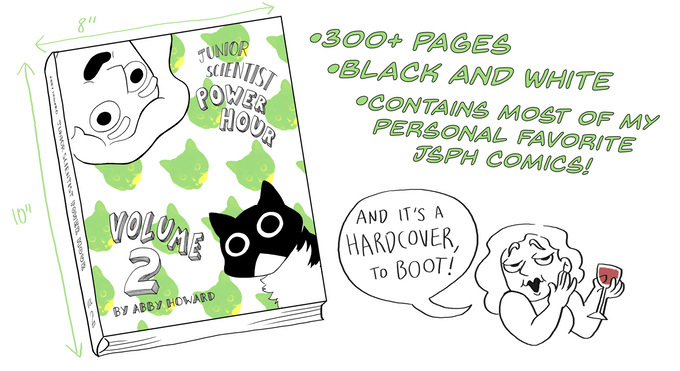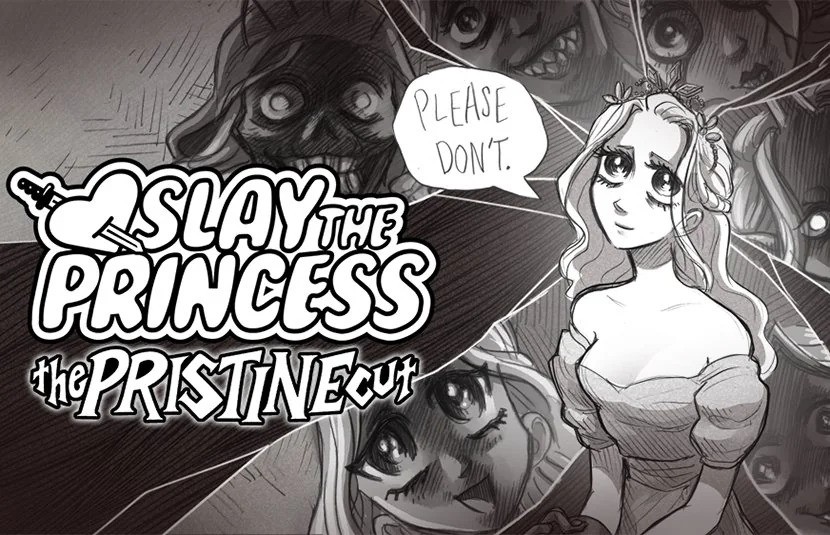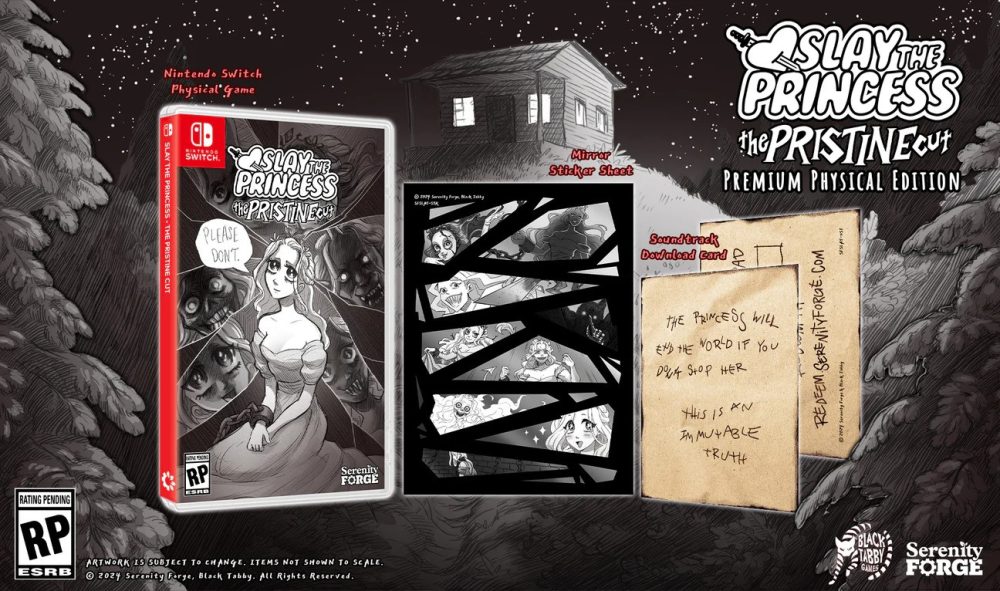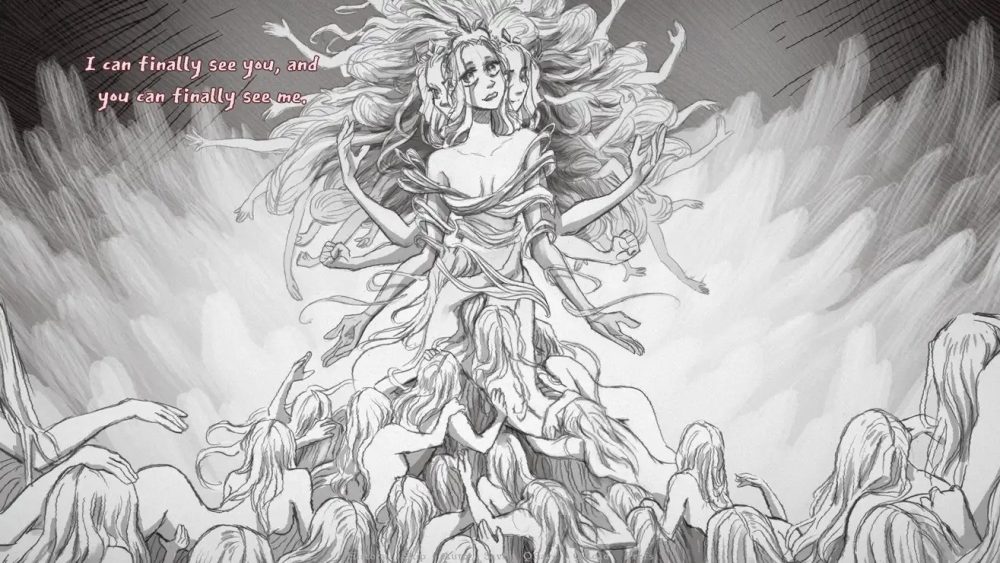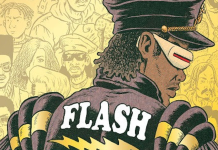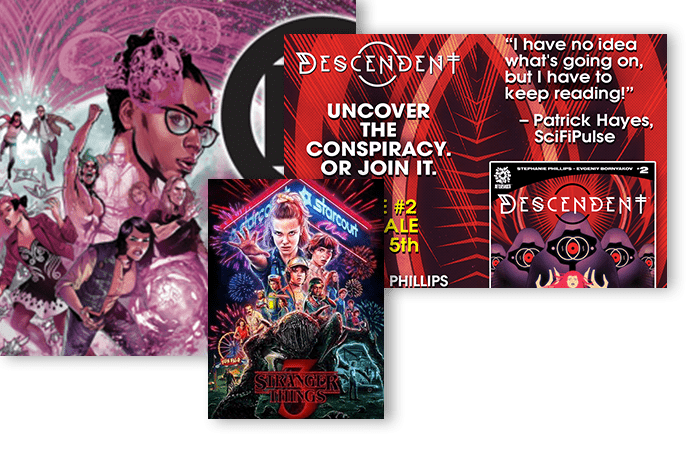If you’ve never experienced one of the greatest visual novel creations of all time, I highly suggest you try Slay The Princess. A masterclass in art meets existentialist narrative, gamers love it, the world-renowned influencer Markiplier loved it, and now, with the game’s first-ever DLC set to launch next month with SLAY THE PRINCESS: THE PRISTINE CUT, there is a lot that players both old and new will enjoy with all-new content, brand new endings, and even more hours of replayability.
Developed by Black Tabby Games, SLAY THE PRINCESS is a horror visual novel game that stands as a perfect intersection of comics meets gaming. It takes the personality archetypes of comic book characters and paints a portrait that blends and bleeds in black-and-white fashion. It’s a game that spins the “Princess Peach” narrative on its head. Tasked where instead of saving a princess, you the protagonist… must kill her.
We got to know more about the series and its upcoming DLC in an exclusive interview with married partners and Black Tabby Game’s founders: the hauntingly good horror illustrator Abby Howard, along with marketing extraordinaire Tony Arias-Howard.
This interview was shortened and edited for clarity.
CHRISTIAN ANGELES: How did Black Tabby Games get started?
ABBY HOWARD: I worked in comics for about a decade and then Tony and I wound up dating. We were doing our own thing but were at a crossroads in our careers. Tony was winding down a startup he was working on making progressive software for campaigns. I finished The Crossroads at Midnight, my last big graphic novel. I was working on a pitch but wasn’t in love with it, which is when Tony and I asked ourselves, “Why not try and make a video game?”
That’s how Scarlet Hollow got started. It’s our ongoing episodic visual novel. Then somewhere in the middle of that, we decided to make Slay the Princess.
ANGELES: Just like that? That’s your origins?
ABBY: Well, we were at NYCC and our friend Kendra was talking about how fun it would be to do a really horrific demon dating simulator. That tied into an idea I had from a long time ago. Within a couple of hours, Tony and I figured out Scarlet Hollow.
ANGELES: And that’s your first game that’s still ongoing right?
TONY ARIAS-HOWARD: Yes. We have a weird release pattern.
ABBY: We’re currently working on episode 5 out of 7 for what’s been in total, already 12-14 hours in terms of gameplay across episodes 1 through 4.
TONY: Each episode is like a self-contained small game that has its story arc with a full beginning, middle, and ending, that fits into an overarching story.
“It was very ambitious for our first game to be an anthology of 7 connected games that we only charged people for… once. So we needed to sell another shorter project to keep the studio going.”
ABBY: We also really love working on Slay the Princess. As much as it sounds like we did it to keep the doors open, it was an idea that tickled us when we came up with it.
TONY: We put 100% of ourselves into everything we do.
ABBY: Or else we wouldn’t do it!
ANGELES: Your passion shows! Now, Abby, you transitioned from making graphic novels to video games. What was that like?
ABBY: The transition was interesting. Very word-focused versus always drawing what’s happening. Fortunately, with fan fiction, I had some experience with prose.
My background in comics helped in that I felt strongly about how the visual flow worked. Especially in episode 1 of Scarlet Hollow. It’s a lot in making sure I could stick to the way a panel flows. Making sure I didn’t lose the action. All while working sprites and backgrounds and trying hard not to draw everything that happens like what I usually do in comics.
It was also a bit of a learning curve working with different file types because I always work traditionally, with everything drawn on one layer. I wasn’t used to using as much transparency and moveable items where different parts could be removed.
In Slay the Princess, the backgrounds were created in 2-3 parts that can move independently so I just have to draw them separately and make sure they all look good when they’re together. Lots of tracing paper was used.
TONY: There’s also a big transition to where both of our games were in 1st person perspective. In Scarlet Hollow, the protagonist is almost a self-incept where people play almost an alternate reality version of themselves.
That also means that we don’t portray any physical characteristics of the character which makes it challenging to keep things visually interesting when you can’t show their body or a lot of actions. It’s like, “How do you draw romance in that scenario?”
ABBY: It’s a fun little challenge every time something happens to the player character in Scarlet Hollow because it needs to feel like it’s happening to you!
It also meant that I had to cut back on weird camera angles like to use in comics, where you can angle on from the ground, up above, or even focus on somebody’s fist as it’s flying towards another person. Instead, in this visual novel, it’s always from the perspective you’re looking at.
TONY: …At least in Slay the Princess we added a new technological leap of, “What if… hands?”
ABBY: We added (the character’s) hands! So now I can show that’s something physically happening to you!
ANGELES: What makes a visual novel different from a graphic novel?
ABBY: It depends. For us, a huge part of our distinction is the branching narrative from a first-person perspective. You can have first-person perspective comic books. You can have visual novels not in first-person perspective. Both are possible.
TONY: I also think the words in a visual novel do a lot of heavy lifting. As opposed to a graphic novel, visual novels can be very narration-heavy and forward. Some have almost no illustrations. Some are just background images, music, and sound. It’s like a multimedia version of a book. Whereas, I feel like comics are a lot closer to movies in a lot of ways.
ABBY: They are. It depends on the comic as some are narration-heavy, but I tend to like the ones that pull back and lean onto the visuals to tell the story. I think that’s a distinguishing factor for comics in general. It’s a movie made by a small team of people.
TONY: Visual novels are broad. Some are strictly linear beginning to end. Then you have others like Slay the Princess, where if you’re looking at just root progressions, there are 20 million permutations to the order of the way things can happen. Every person playing will have a unique experience.
For Scarlet Hollow, we wrote this very complicated system mapping relationship dynamics between you and other characters so that the text is very responsive and changes your actions. I’ve seen other visual novels go as far as to include combat mechanics, puzzles, and survivor horror mechanics. It’s such a broad genre that it’s hard to boil down.
ANGELES: Did you expect Slay The Princess to get as big as it has?
TONY: As soon as we announced we knew it was going to be huge. Just to compare, the internal metrics of interest for how Scarlet Hollow was in its lifetime? Slay The Princess blew away just a week after announcing plus putting the demo out there. We’re very happy with how Scarlet Hollow’s been doing, but it sells 1/20th of what Slay The Princess does on a good day.
Also, Scarlet Hollow was more difficult to sell because it didn’t have voice acting. A single playthrough is around 100,000 words. We’ve done streams reading it aloud. It’s exhausting.
ABBY: By the end, your voice is just gone. There’s also something to be said for how easy it is to summarize Slay the Princess. You can get the idea and intrigue across in one sentence.
TONY: Compare that to Scarlet Hollow, whose premise is that you’re at a funeral for an aunt you never heard of who died, and you’ve got to manage your relationships with these characters in town, just as a supernatural mystery unfolds. This was a challenging sell because…
“In the year 2024 you have 5 seconds to get someone’s attention.”
ABBY: The pitch doesn’t lend to as much intrigue as it has. It’s a basic premise for a mystery story, sure, however, I do feel like it’s not a basic game!
TONY: When someone buys and plays Scarlet Hollow, they’ll play it and word of mouth spreads. But to this day, the most successful way to get people to play Scarlet Hollow is to say the people who made Slay The Princess made this.
ANGELES: You’re both writers. What’s it been like navigating the massive lines of dialogue and outcomes for both games?
TONY: Collaboration is super easy. It helps we’re married and share a brain.
ABBY: Honestly, I feel like it’s our biggest strength that there are two of us. If one of us doesn’t remember something the other will, and if one of us is stuck on a problem, the other might have a solution. The fact we already had a really good basis for communication was ideal.
TONY: Scarlet Hollow is much harder to keep track of with so many details. We’re 4 episodes in and we’ve got 580,000 words so far. Slay the Princess is a little under 200,000.
Slay the Princess is also so much more abstract and general. The struggle of writing it was that it’s a horror game about love, in the broadest sense, and the relationship between the player and the princess. It’s about the way we perceive others and how others see us that shapes and defines who we are. So how do we make it so that every choice, while different, makes it so all these stories come together thematically?
ABBY: Any piece we put into our games has to feel good. Feel important. And fits and tells the story we’re trying to tell.
TONY: So the writing in Slay the Princess charts out a series of events. We have rules for how the princess functions and the sounds. She changes based on your choices. Her voice is mapped roughly to the optional dialogues you picked.
Let’s say you go with denial. Let’s say you attack her. Stall for time. What does that change?
This game is a lot of exploring these options to their conclusions and then asking ourselves, was this the right choice? Was I a good person? Is this a satisfying conclusion to me that ties up this story arc – and if yes, then great, and if not, then we redo that path.
Markiplier videos have better viewership ratings than most modern TV shows with a staggering lifetime total amassing 21 BILLION views.
ANGELES: Now the big questions. MARKIPLIER’s playthrough brought large amounts of attention to the game. How exciting was this for you?
ABBY: It was amazing. We were already out for our anniversary dinner when Tony told me Markiplier played Slay the Princess.
TONY: There’s something always terrifying when a big content creator plays your game. What if they don’t like it? Or what if they don’t connect with it the right way? Content creators are first and foremost entertainers. It supersedes treating the art seriously while consuming it.
ABBY: Which is reasonable. But of course, we’re the ones who made the art to begin with. Sometimes we let people play without watching the videos-
TONY: But we watched the Markiplier one. He engaged with the narrative so earnestly which I really liked.
ABBY: It was the best-case scenario. The fans also decided they did not hate what he was playing and so were very kind in response.
TONY: it was huge. Like relaunching the game. My only regret is it happened before the DLC.
ANGELES: What were the numbers like?
TONY: Over the course of the 3-4 weeks following the first video we moved 80,000 copies. It paid for the localization.
ANGELES: Now the big one. Tell us about Slay The Princess – The Pristine Cut?
ABBY: So the things we can tell you. There are major updates coming to the Apotheosis, Fury, and The Den roots.
TONY: there are brand new chapter 3 princesses spanning off The Spectre, The Damsel, and Prisoner. For my personal tier list i think of the new and updated roots, all are in my top ten.
ABBY: It’s really good stuff! Not to toon our own horn, but if you like slay the princess as it is now, the pristine cut just makes it so much better! It fills in all the areas i think were kinda weak before and it has some of the most interesting stuff we’ve written for the game.
It also has a new ending. That one will be hard for people to find. It also has really cool art!
TONY: Earlier this year, we did a big overhaul of the ending back in March. It was originally part of the Pristine Cut but a lot was going on and we wanted to move the Pristine Cut’s release to the fall so we could simultaneously ship it on console and with localization.
People loved the overhaul of the ending with the new animations and fleshed out dialogue in the final cabin. It makes the ending better. It’s also indicative in the jump in quality the new stuff has. We’re happy with the base game but we’re also striving for perfection as creators, and i think we finally hit a point with these new roots where we’ve done all we wanted to do with this premise.
ABBY: it feels very complete to me. And also, after the ending, any complaints about it completely dried up so i think that means we did a good job.
TONY: A lot of the new stuff is weird. One of our bench marks for the new and updated roots was the wild as a third chapter coming from The Beast/ Witch. It’s strange. Existential. People feel a lot of things and i think with both that and the moment of clarity in chapter 3.
Whenever people get them as their final vessel, it felt so intended to go through them as a final root. That’s the bar we set on how all the new and expanded chapter 3’s should feel. As the final piece falls into place it should feel like all the concepts of the game click.
ANGELES: In terms of expanded gameplay how many hours does it add?
TONY: We’ve added a gallery with root-level unlocks that take you through finding up to 95% weird and niche interactions. If you’re finishing the gallery and aren’t skipping dialogue and listening to everything new, maybe 20 hours?
ABBY: I think so
TONY: It takes 12-14 if you’re not rushing and we added 6 or so to that.
ABBY: About 35% across the board.
TONY: There was 6000 lines of dialogue in the base game, the pristine cut adds 2500. There were 5000 illustrations, pristine cut adds a couple thousand more.
ANGELES: Final question. If somebody were to be career pivoting or trying ot make their first indie game what advice could you give them?
TONY: So if you’re making your first indie game start small. We lucked out with Scarlet Hollow but also it wasn’t either of our first projects. Abby had many books under her belt. If you’re just getting started, you want to get a sense of what its like to finish something and see what does versus does work for you. You should do that before you commit to a 3-5 year dream project.
For some people that might just be participating in a gamejam. If you like visual novels and horror, SPOOKTOBER visual novel game jam is an annual occurrence where people on ITCH make small 15-20 minute visual novels. It’s an opportunity to see what it’s like, what’s harder to make than you thought it would be.
On the an off chance you hit something that strikes a chord with other people you can pivot into that. Slay the princess was going to be smaller game at first but the demo really struck a chord with so many people. We realized here’s an opportunity to put every single ounce of what we have in this project. Eyes are on it. Do a good job and people will see it.
ABBY: That’s the biggest one. Aim to finish something. Even for us, finishing episode 1 was to show ourselves we can do it. Make a video game and make it go. If you hit a road block, just look it up, there are tons of resources from developers who hit similar road blocks.
Above all, make something you enjoy making and that you want to explore. Don’t make something because you think it’s marketable. Don’t make something because somebody else says this is what you should make. Make the thing you like because that means you put your heart and soul into it and someone else is gonna see that.
SLAY THE PRINCESS: THE PRISTINE CUT launches in the fall of 2024 and will include a port of the game onto all consoles. The game will also be localized into 10 other languages.
